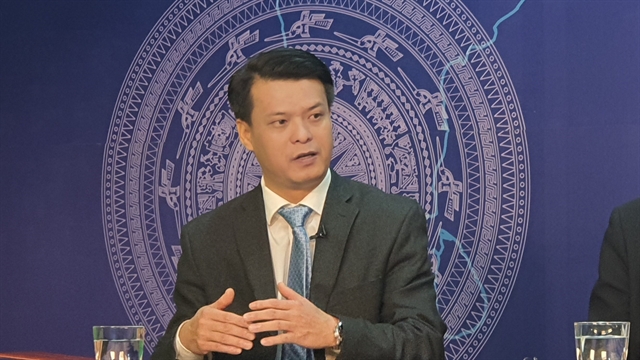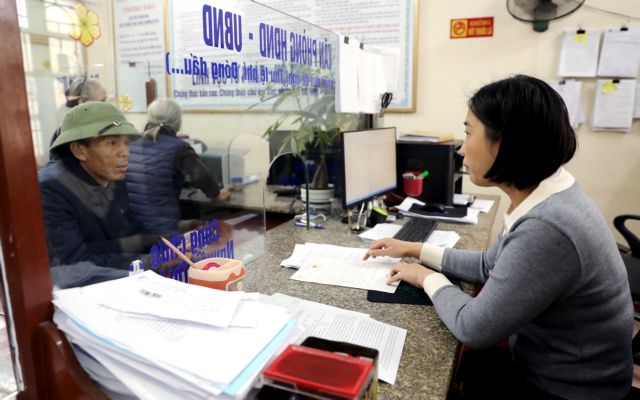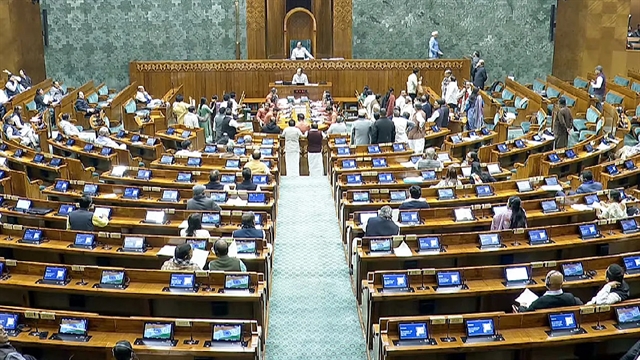 Politics & Law
Politics & Law

 |
| Dr Nguyễn Văn Đáng, researcher on public policy and management at Hồ Chí Minh National Academy of Politics. — VNA/VNS Photos |
Việt Nam has seen encouraging results over the course of its administrative reforms. Dr Nguyễn Văn Đáng, researcher on public policy and management at Hồ Chí Minh National Academy of Politics, spoke to Nhân Dân (The People) newspaper about the reforms, stressing that this process is an ongoing requirement for a service-oriented administrative sector.
Administrative reform efforts have been carried out with determination, but many people say that procedures are not yet optimised, posing multiple obstacles for citizens and businesses. What is your perspective on this matter?
Over the past decade, efforts to improve the quality of our administrative system have yielded notable results. The decentralisation and delegation of authority have helped revamp the organisation and operations of public agencies to be more professional and flexible. Many cumbersome administrative regulations and various types of ‘sub-licences’ causing difficulties to citizens and businesses have been removed. Essentially, there is a growing professionalism in the awareness and service-oriented attitude of civil servants.
However, it must also be acknowledged that these changes have not been able to keep pace with the country’s development requirements in the current context. In daily life, cases where people are dissatisfied with [public] workers' manners and attitude are still evident, and instances of rigidity, delays and sentiment of ‘bureaucratic hassle’ still exist, which are inconvenient and time-consuming for citizens and businesses.
The shortcomings of the country’s administrative system stem from many causes, not only historical upheavals but most importantly, as a developing country. Before 1945, the colonial administrative system primarily served the colonial regime. After 1954 in the North and 1975 nationwide, the administrative system with its centralised, subsidised governance model, became an instrument to exert the Government’s control over most social and economic activities.
In 1986, the transition to a market economy and international integration increasingly revealed many shortcomings in our administrative system. The most notable include a cumbersome apparatus, inflexible operational mechanisms, overlapping tasks and functions, complex procedures and regulations, and the limited capacity, awareness, attitude and working style of the public servants. These are real issues that have been acknowledged and have driven stronger demand for reforms of the administrative system.
In 2023, the Ministry of Home Affairs announced the Satisfaction Index of Public Administration Services (SIPAS), which showed that as many as 82.6 per cent of respondents are satisfied with the services they receive. Could you explain this figure?
It must be said that results from surveys and polls like this are necessary for a modern administrative system. By analysing the indicators, we can gain some understand the performance of the system, thereby enhancing its strengths and addressing its weaknesses.
However, in my opinion, survey results can only serve as a reference and cannot fully and accurately reflect the performance of the administrative system. Whether these indicators are reliable or not depends on the design and process of the survey, how the data is collected and whether it ensures representation.
In general, departments or localities should consider these results, but also should not hastily equate high indicators with good quality, or assume that low indicators automatically mean poor quality. The level of satisfaction of citizens and businesses depends on many factors, and that requires careful and comprehensive evaluation to draw conclusions about any given result.
Some localities have employed a rating system for civil servants. How can this measure improve public services for citizens and businesses?
From my perspective, rating civil servants and public employees is necessary not only to gather feedback from the people but, more importantly, to shift the mindset of the administrative system and public service to work for the people and serve the people.
In practice, the rating system is an instrument that can put pressure on each unit and civil servant to improve their task performance. However, we need to be aware that the rating results may reflect very subjective individual experiences and opinions. There might be cases where a civil servant performs their job well but still receives a poor rating due to non-professional factors.
Therefore, when assessing rating scores, the head of the unit must carefully weigh judgement, including for employees who have a poor rating. The management must understand that these scores are only one criterion, one method to evaluate public employees. For those who receive low ratings, it is necessary to identify whether the issue lies in their capacity, working processes or any other factor. We must avoid the hasty assumption that a low rating automatically equals poor performance.
To minimise the influence of subjective factors and avoid superficiality in the rating of civil servants, these surveys must only be handed out after an individual or a business has finished their administrative procedures, at which point they have a holistic experience to provide feedback, evaluation and rating scores on the service quality.
 |
| A civil servant guides a resident through administrative procedures in the northern city of Thái Bình. |
Digital transformation and application of technology are solutions to improve administrative operations. How can we improve the digital capability of civil servants and the public?
Digital transformation and the modernisation of public service delivery are an inevitable trend worldwide and are also being pursued with determination in our country. Reducing direct human intervention helps reduce costs and time for both citizens and businesses.
However, it is evident that there may be discrepancies in digital capacity across the country. Civil servants and citizens in mountainous and remote areas may face more challenges compared to those in urban zones. Elderly groups will also find it harder to adapt compared to younger groups.
Investing in technology is fast and easy, but changing people’s habits and skills can take decades. Despite the many challenges, we must persist in implementing programmes that employ new technologies and digital transformation to gradually improve the operational quality of the administrative system.
Some say that citizens should be considered ‘customers’ in order to build a service-oriented government. What is your opinion on this matter?
This thinking has been quite common in many developed countries since the 1980s, with the expectation that the government should operate like a business providing public goods while citizens are viewed as customers. This approach emphasises employing methods from the private sector in the public sector, promoting public-private cooperation and even transferring some administrative tasks to private entities. As a result, the administrative system and public services can operate more flexibly and effectively, thereby better meeting the increasingly diverse needs of modern society.
However, in addition to these advantages, we must be clearly aware of the limitations in viewing citizens as customers. The government must always be conscious of its mission to serve the public interest in order to maintain social cohesion and avoid catering to narrow private interests, which could lead to social discord.
Viewing citizens and businesses as customers aligns with the trends of modern society. This approach can be applied in specific areas, especially for simple, high-demand administrative services, where the State may not necessarily need to perform these tasks and can delegate them to private entities. — VNS



.jpg)
